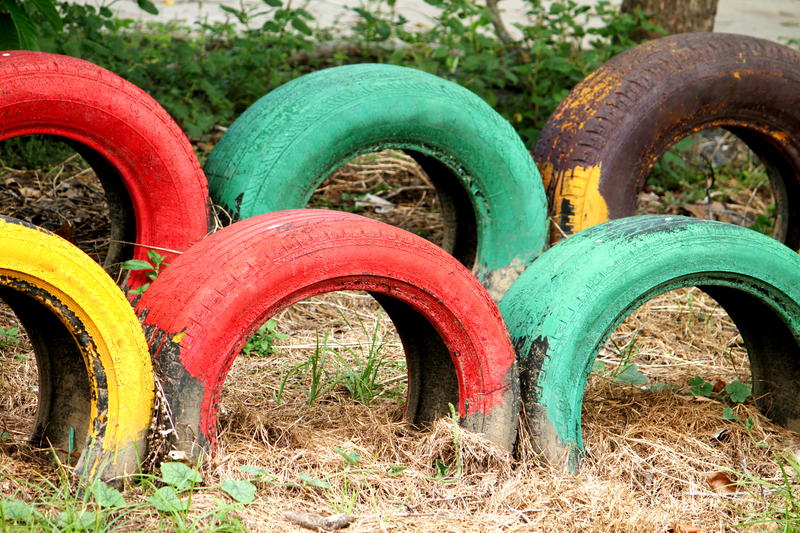Engaging Storytelling Techniques to Teach Kids About Recycling
Recycling is an essential aspect of protecting our planet. Yet, making children understand its importance often requires more than just facts and figures. Storytelling offers a vivid, memorable, and interactive means of conveying complex environmental topics to young minds. In this article, we delve deep into the most effective and creative storytelling techniques for teaching kids about recycling. Whether you're a parent, teacher, or environmental advocate, you'll find innovative ways to spark curiosity, build awareness, and inspire responsibility in children of all ages.
Why Use Storytelling to Teach Kids About Recycling?
Children learn best when they are engaged and entertained. Traditional lectures or dry recycling facts may not capture their interest. However, stories ignite imagination, build empathy, and make learning memorable. Through characters, adventures, and relatable scenarios, kids relate to recycling on a personal level.
- Emotional connection: Stories draw kids into the lives of characters facing real-world challenges, making abstract concepts like waste management tangible.
- Active participation: Interactive tales invite children to act out parts, solve problems, or even suggest alternative endings, reinforcing the message.
- Long-term retention: Lessons learned from stories are remembered longer than facts or statistics.
- Cultural relevance: Storytelling can connect recycling with local customs or heroes, making lessons meaningful in every community.

Understanding Kids' Perception of Recycling
Before diving into storytelling methods, it's important to recognize how children perceive recycling. To many, waste and environmental protection may seem distant or unrelated to their daily lives. Common obstacles include lack of understanding, feeling powerless to help, or confusion about recycling rules.
With the right stories, you can:
- Demystify recycling practices.
- Show positive impact of small actions.
- Encourage curiosity and critical thinking about waste.
Top Storytelling Techniques for Teaching Recycling to Kids
1. Hero's Journey: Recyclables As Protagonists
The classic hero's journey is a powerful template for engaging children. In this approach, everyday recycled materials--plastic bottles, paper, or cans--become characters on a mission. Through their adventures, kids learn about the transformation from waste to new products.
- Example: "Percy the Plastic Bottle" embarks on a journey from a landfill to a recycling center, meeting challenges along the way but ultimately being reborn as a park bench.
- Teaching Point: Each stage of the story can illustrate different steps and benefits of recycling.
2. Environmental Fables & Folktales
Fables, with moral lessons, are perfect for discussing recycling and sustainability. Integrate mythical creatures, talking animals, or magical settings to capture young imaginations.
- Use a cast of forest animals affected by pollution, highlighting the consequences of littering and the rewards of community recycling.
- Classic fable structure: Problem & consequence, lesson learned, and transformation through recycling efforts.
3. Interactive Story Creation
Give children a role in creating the narrative! Interactive storytelling not only strengthens creativity but also encourages deeper learning about waste management and recycling.
- Create group stories, allowing each child to introduce a recyclable character or propose a solution to an environmental problem.
- Act Out: Organize a "Recycling Adventure" play where kids enact the journey of recyclable items from homes to factories.
- Choose-Your-Own-Ending: Present choices within the story, asking children what should happen next if characters litter or recycle.
4. Visual Storytelling with Comics & Picture Books
Comic strips and picture books bring recycling stories to life with dynamic illustrations. Visual aids help children grasp abstract ideas and make connections between their actions and environmental outcomes.
- Design your own recycling superhero -- "Recycling Ranger" -- who saves the day by teaching proper sorting techniques.
- Collaborate on comic panels demonstrating the impact of recycling on wildlife and neighborhoods.
5. Digital & Multimedia Storytelling
In today's digital age, integrating technology can make stories even more compelling. Use animated videos, interactive apps, virtual reality experiences, or online story builders focused on recycling.
- Online games: Guide animated characters through recycling challenges, sorting items, or cleaning up their environment.
- Host a virtual "storytelling circle" where kids share their tales online, promoting social learning and creative exchange.
- Utilize multimedia quizzes to test recycling knowledge after the story.
Practical Tips for Storytelling About Recycling
Incorporate Local and Everyday Contexts
Children relate best when stories are rooted in their own environments. Tailor recycling stories to reflect your community's landmarks, customs, and challenges. This makes the lessons relevant and actionable.
- Feature local recycling heroes: Showcase stories of real-life community members making a difference.
- Set stories in familiar places, like their neighborhood park or school.
Infuse Humor and Adventure
The most effective recycling stories for children feature a blend of humor, suspense, and adventure. Silly sidekicks, unexpected twists, and playful language all help keep kids invested in the narrative.
- Create a recycling "treasure hunt" where clues are hidden in the story.
- Let recycling bins come to life with funny voices and quirky personalities.
Use Repetition and Reinforcement
Children remember messages best through repetition. Reinforce key points at the beginning, middle, and end of your stories. Use catchphrases or mantras like "Reduce, Reuse, Recycle" to boost memory.
- Sing recycling songs that retell parts of your story.
- End each story with a challenge: "What will YOU recycle today?"
Let Kids Be the Heroes
Encourage children to see themselves as part of the solution. Assign them roles in stories or within your family/classroom recycling efforts.
- Invite kids to create a mascot for their home or school recycling program.
- Celebrate their actions in "hero stories" that recognize everyday recycling efforts.
Real-World Examples: Successful Storytelling Campaigns
Many organizations have used creative storytelling to engage kids in recycling:
- The Lorax by Dr. Seuss: While primarily focused on conservation, this classic tale offers strong messages about environmental protection and personal responsibility.
- Recycling Superheroes: Many schools introduce characters who "battle waste" to make recycling fun and impactful.
- Environmental film festivals: Short animated films and documentaries for children can kickstart important discussions about recycling.
Measuring Impact: How Storytelling Improves Recycling Education
Does storytelling actually help children understand and practice recycling? Studies and anecdotes suggest that children engaged through stories show:
- Better recall of recycling rules.
- Increased willingness to participate in waste management efforts at home and school.
- Higher engagement in classroom recycling projects.
- Greater enthusiasm for learning about the environment.
Assessment tips:
- Discuss story themes after reading and relate them to real-life recycling tasks.
- Track recycling participation before and after storytelling sessions.
- Encourage kids to retell stories in their own words, checking for understanding.

Creative Story Ideas to Get Started
- Maggie's Magical Recycling Machine: A child invents a machine that transforms trash into treasures, inspiring her friends and community to recycle creatively.
- The Paper Bag Princess and the Evil Litterbug: A brave princess fights to clean up her kingdom and teach everyone the value of reusing and recycling everyday items.
- Adventures of the Bottle Brigade: A group of talking bottles teams up to escape the landfill and become useful objects, like toys, benches, or art supplies.
- Sandy Saves the Sea: A young child helps a sea creature rescue its friends from plastic pollution by organizing a beach cleanup and spreading awareness about recycling.
- The Curious Case of the Disappearing Cans: A classroom mystery is solved when students discover that recycling makes used cans "disappear" into new products!
Conclusion: Empower the Next Generation Through Story
Engaging storytelling is one of the most effective ways to teach kids about recycling and waste management. By using colorful characters, interactive adventures, and relevant challenges, you can make complex environmental concepts accessible and fun for young learners.
Remember: Every story you tell about recycling can inspire a child to become an environmental steward. The stories you share today could empower a generation to take bold steps towards a cleaner, greener planet.
Start crafting your own recycling stories and watch as children become excited, knowledgeable, and proactive about saving the Earth--one recycled item at a time!